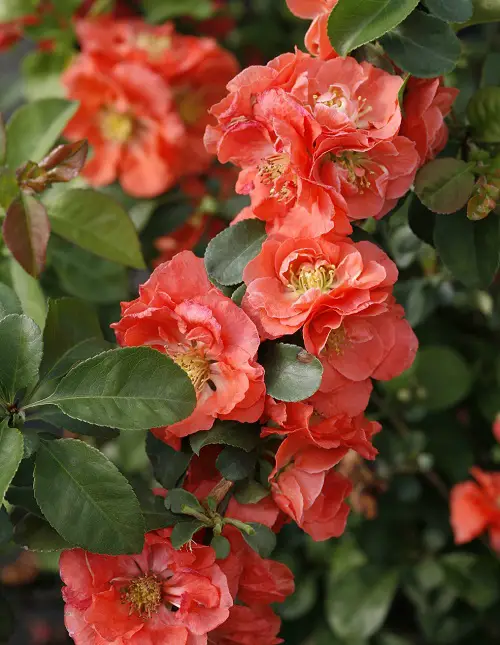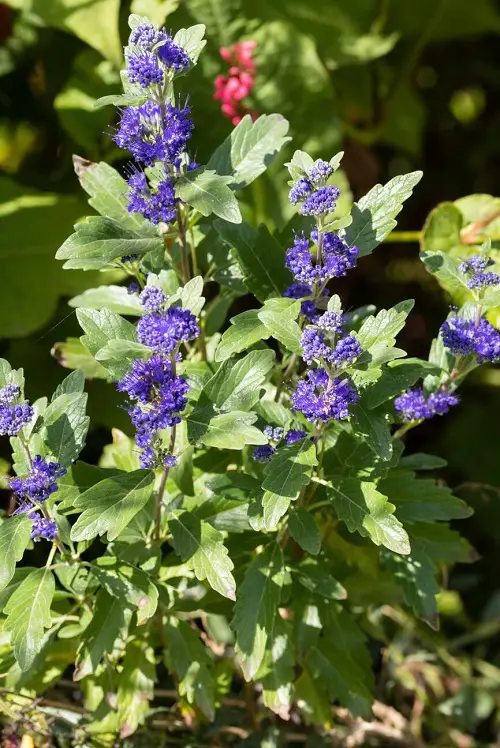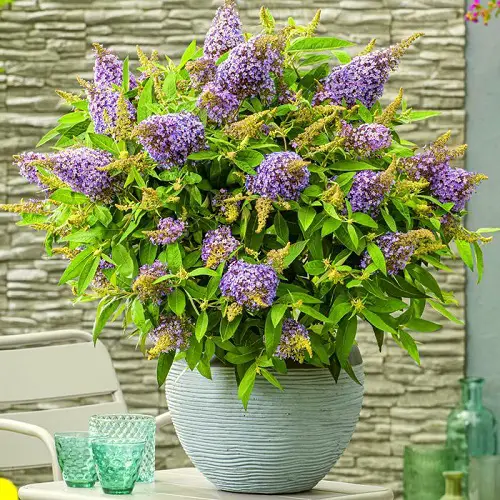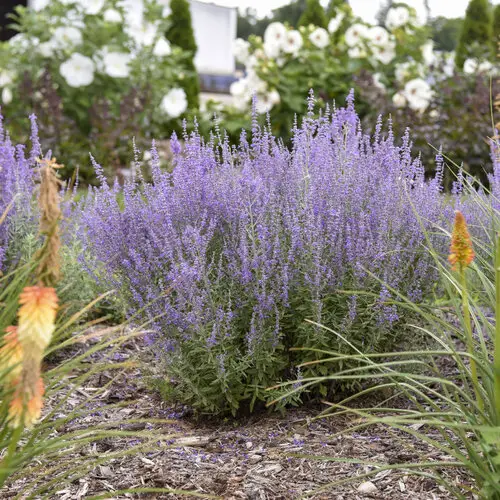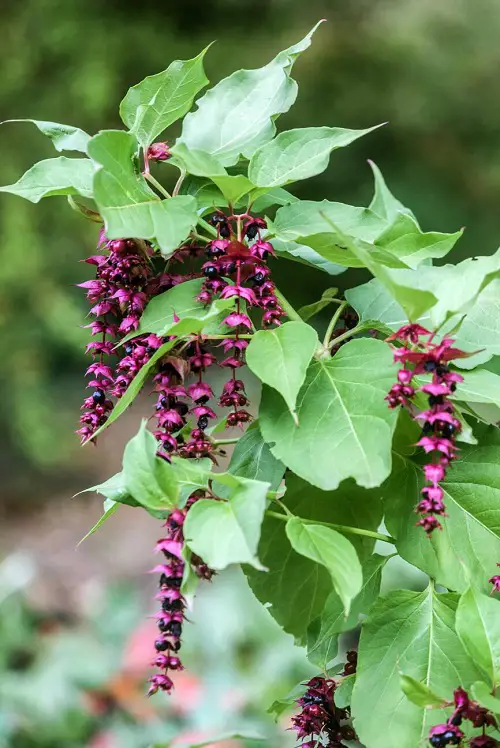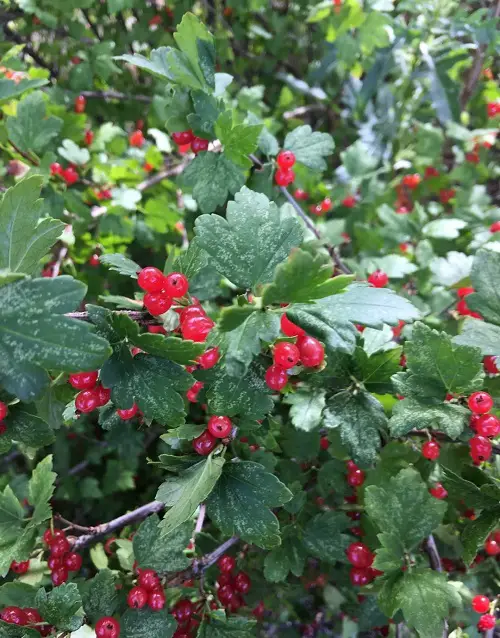If you prune these plants in March, they’ll flower more in upcoming months: in spring and summer, and some even in fall.
March is that time of the year which marks the fresh growth in many plants – pruning around this time places a vital role for the coming burst of Spring and Summer, preparing the specimens to bloom properly!
Don’t Skip This!
While you do this, it’s very important to determine whether the bush you’re going to prune grows flowers on an old or new stem:
1. If it blooms on old stems, which is the previous year’s growth, be cautious and only remove dead and damaged branches and do some light trimming.
2. For the plants that bloom on new growth, such as the butterfly bush, you can prune more aggressively, but it should never be more than one-third of the entire growth of the plant at one time.
3. There are plants that bloom in both new and old woods, for example, certain types of roses, hydrangeas, and azaleas – if you’re dealing with them, only remove dead and weak growth and keep some of the old stems growing.
Plants You Should Prune in March for More Flowers
1. Flowering Quince
Botanical Name: Chaenomeles speciosa
Because flowering quince blooms on old wood that develops in last year’s summer or fall, it’s best to prune it once the plant has flowered, which happens around the end of March or April so that it can get ready for next year’s flowering.
2. Bluebeard
Botanical Name: Caryopteris
This shrub blooms on new growth, and late winter or early spring is the perfect time to prune to maximize its flowering potential for summer and fall. Simply look for the last year’s growth and trim all old woody stems back to only 8 to 12 inches from the ground.
3. Hydrangeas
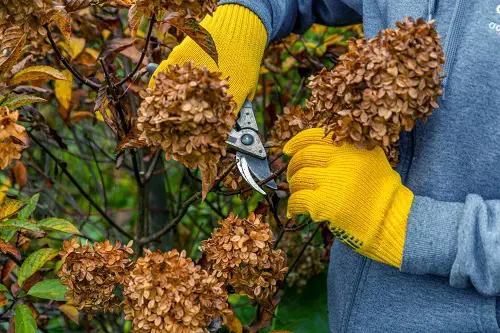
Botanical Name: Hydrangea macrophylla
In March, trimming hydrangeas could be beneficial. However, it’s crucial to identify its type as some bloom on old stems and some on new, and there are varieties that form blossoms on both, so be careful while snipping them off and keep some of the old wood intact.
4. Butterfly Bush
Botanical Name: Buddleja davidii
For encouraging bushiness and vibrant flowers, trimming butterfly bushes down to the ground, about a foot or two left in height, is best in March for robust growth in the upcoming season.
5. Russian Sage
Botanical Name: Perovskia
For Russian sage, cutting back the old growth will make way for the fresh growth as it blooms on new wood; it’ll be more than happy with aggressive pruning – it will also make the plant less dense, making space for air and sunlight and more robust growth for coming growing season.
6. Clematis
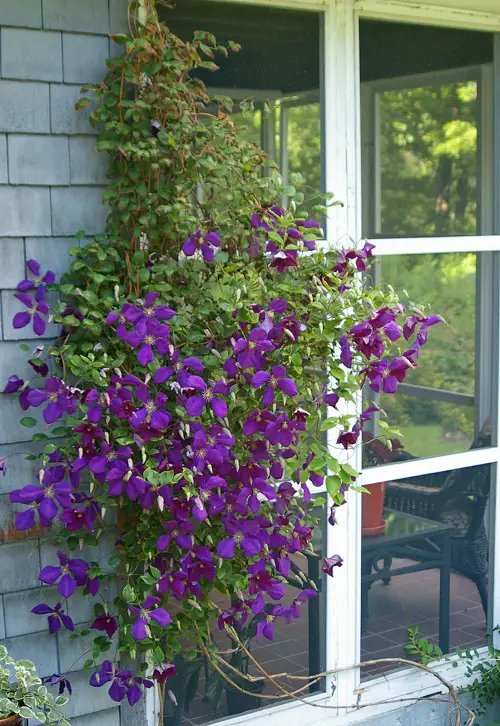
Botanical Name: Clematis spp.
For clematis, understand its variety, whether it blooms on new or old wood; some of the cultivars even bloom on both. Once you know, simply take off the old growth (if it blooms on new growth) or do light pruning by removing just damaged and diseased parts (if it blooms on old growth).
7. Rose Bushes
Botanical Name: Rosa spp.
To have plentiful roses, cut back any overcrowded or crossing branches to create space for sunlight penetration and air circulation in your rose bushes – particularly in March.
8. Forsythia
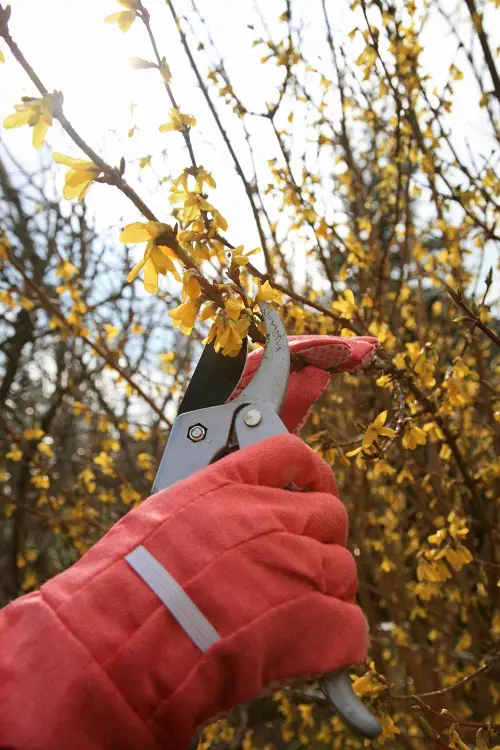
Botanical Name: Forsythia x intermedia
Pruning forsythia is similar to flowering quince as it blooms before or around the arrival of spring. Only do this in march if you don’t notice any new flower buds and it has finished flowering.
It would be a good idea to take away the spent blooms along with flowered and damaged stem sections. Do this in March to ensure it blossoms soon!
9. Summer Blooming Spirea

Botanical Name: Spiraea japonica
This one is particularly a summer-blooming variety, so taking out last year’s foliage and branches and shaping the plant in March will definitely help it flower better in the coming months.
10. Himalayan Honeysuckle
Botanical Name: Leycesteria
As these shrubs can become too dense over time, March marks the perfect time to prune out excessive growth for better sunlight penetration for more flowers.
11. Hardy Fuchsia
Botanical Name: Fuchsia magellanica
Hardy fuchsia has a long flowering season, from summer to early winter, so it’s one of the best candidates for pruning in March. However, you should only do it once the risk of frost has passed and you see signs of new growth.
Start pruning this fuchsia variety to stimulate more development. Cut winter-damaged stems and old growth to shape them and promote branching, which equals more flowers!
12. Hibiscus
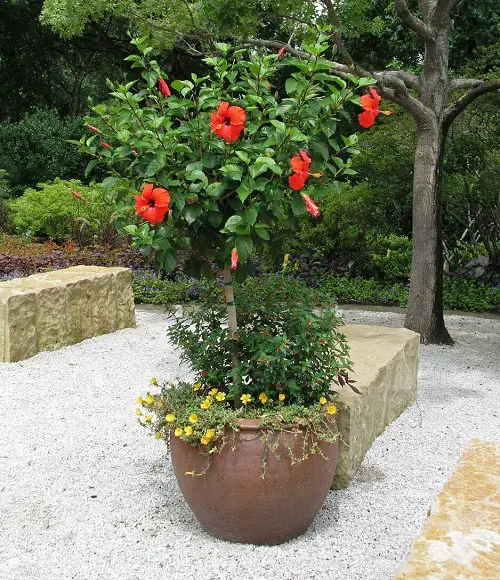
Botanical Name: Hibiscus rosa-sinensis
These plants flower on new growth, so you must cut down the old stems to make way for the new ones. Your hibiscus will be full of flowers in summer! However, if you live in a cold climate, wait for pruning in April.
13. Alpine Currant
Botanical Name: Ribes alpinum
Early spring (March) is ideal for pruning as it ensures the plant is still dormant or about to grow, reducing stress and risk of infections. Take out the old growth along with damaged and diseased parts – that’s it. The plant will be rejuvenated!
Note: Other summer shrubs like Arrowwood viburnum, Buffaloberry, Burning bush, Buttonbush, Dogwood, and Honeysuckle follow a similar pruning pattern to Alpine currant.
Check out the Best Low Maintenance Evergreen Shrubs
14. Lilacs
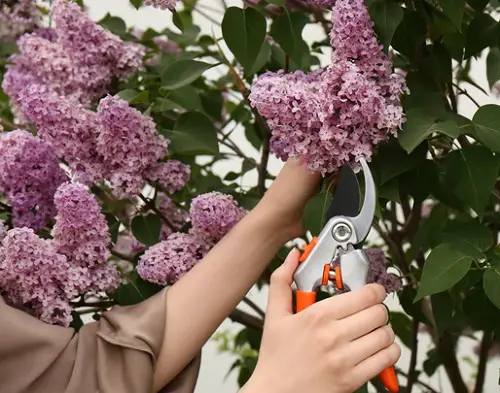
Botanical Name: Syringa spp.
Lilacs are best pruned after they finish flowering, which can be in May or June, but in March, you can do soft pruning.
Remove dead and diseased stems for better light penetration and air flow, which helps the plant bloom profusely later in summer.



